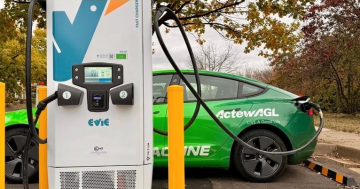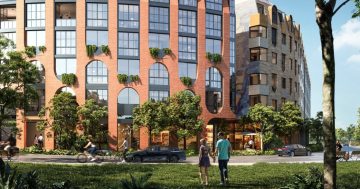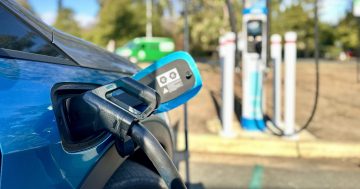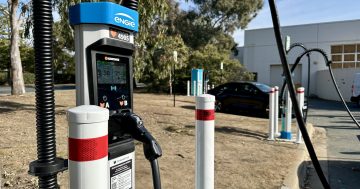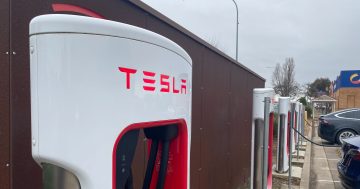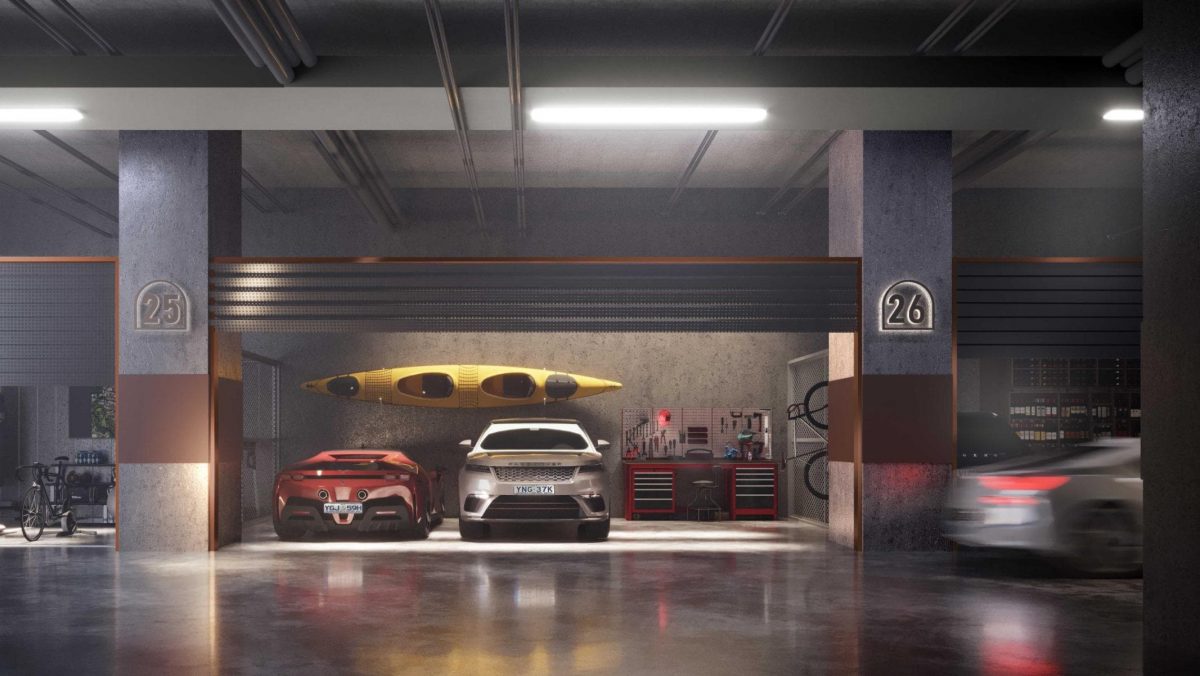
Artist’s impression of one of the private car parks at The Markets. Image: The Markets Residences.
A 10-storey apartment building in Belconnen is set to become the first residential development in Canberra to include an electric vehicle (EV) charging point in every private car space.
Construction on The Markets, next to the Belconnen Fresh Food Markets redevelopment, will begin early next year. It includes 313 apartments and commercial spaces, with underground parking.
In line with the planned ban of new fossil-fuel-powered cars in 2035, the ACT Government’s new planning rules for 2023 mandate the installation of EV-ready infrastructure in new multi-unit residential developments.
To make it happen, The Markets’ developer, Custom Apartments, teamed up with Canberra business EV On to supply one seven-kilowatt Ocular charger per unit plus at least four communal 22-kilowatt charging points. It’s at no extra cost to buyers, including those who have already signed contracts.
“It’s about future-proofing the building,” Custom Apartments director Peter Micalos said.
“We’re proud to be developing a project that people not only want to live in but will also enjoy significant savings and potential enhanced capital appreciation.”
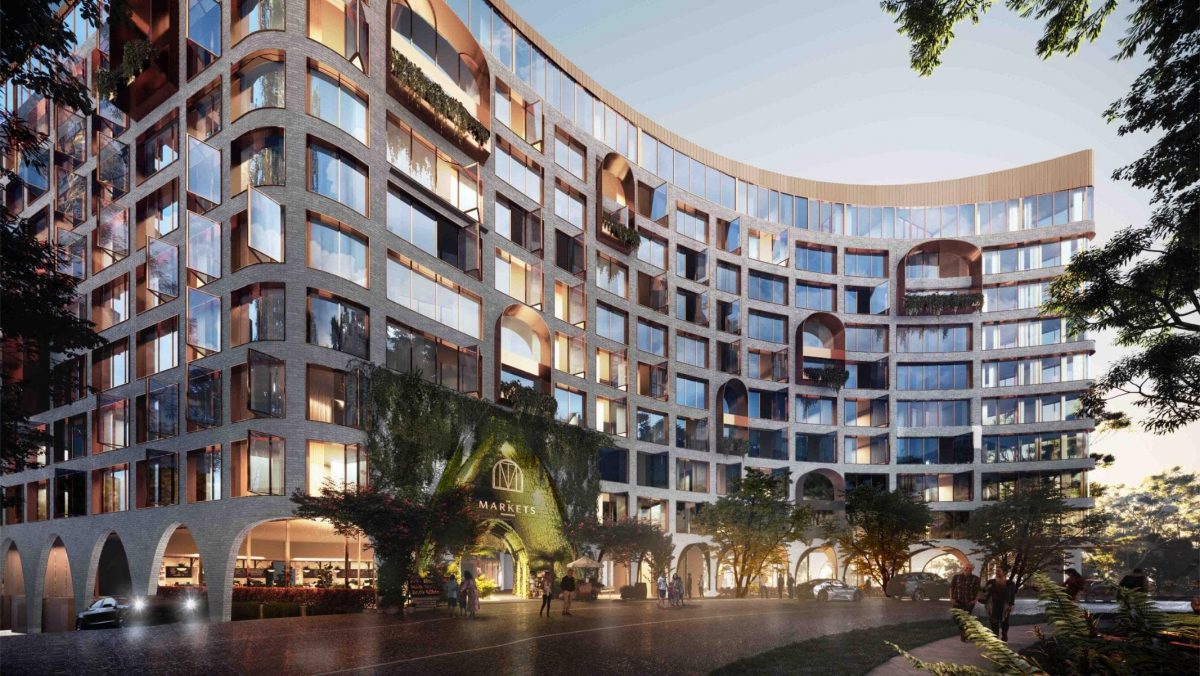
Artist’s impression of The Markets. Image: The Markets Residences.
The sustainability manager at The Agency Canberra, selling agency of The Markets, Sasha Trpkovski, said the demand is there.
“It’s no longer just about how many bedrooms and bathrooms the home has, but about the sustainability features it offers, and EV chargers are definitely a priority.”
EV On CEO Aliqua James said the developers chose to jump the gun by buying and installing the chargers en masse rather than go through costly and fiddly retrofits afterwards.
“They get a better price that way, and it’s simpler for the electricians to install them together rather than slowly doing it over five years as owners ask for one,” she said.
Adding an EV charger to an apartment car park post-construction can cost up to $5000.
Ms James said the charger circuits will use “load management” technology to distribute power depending on how many cars are plugged in at once.
“If we have all 313 chargers running at once, the circuits will distribute the power between them so it doesn’t blow up the grid,” she said.
“However, we’ve worked with our electrical engineers to ensure the chargers can deliver a base amount – generally 50 per cent of the battery capacity – overnight, so everyone stays happy. Most people also aren’t going to be driving 300 km every day.”
Because the government has mandated all new residential developments have sufficient power for a charging point in each car space, Ms James said it’s ultimately up to them to negotiate with EvoEnergy to ensure the street’s electrical grids can handle it – a particular challenge as the city’s gas connections prepare to go offline by 2045.
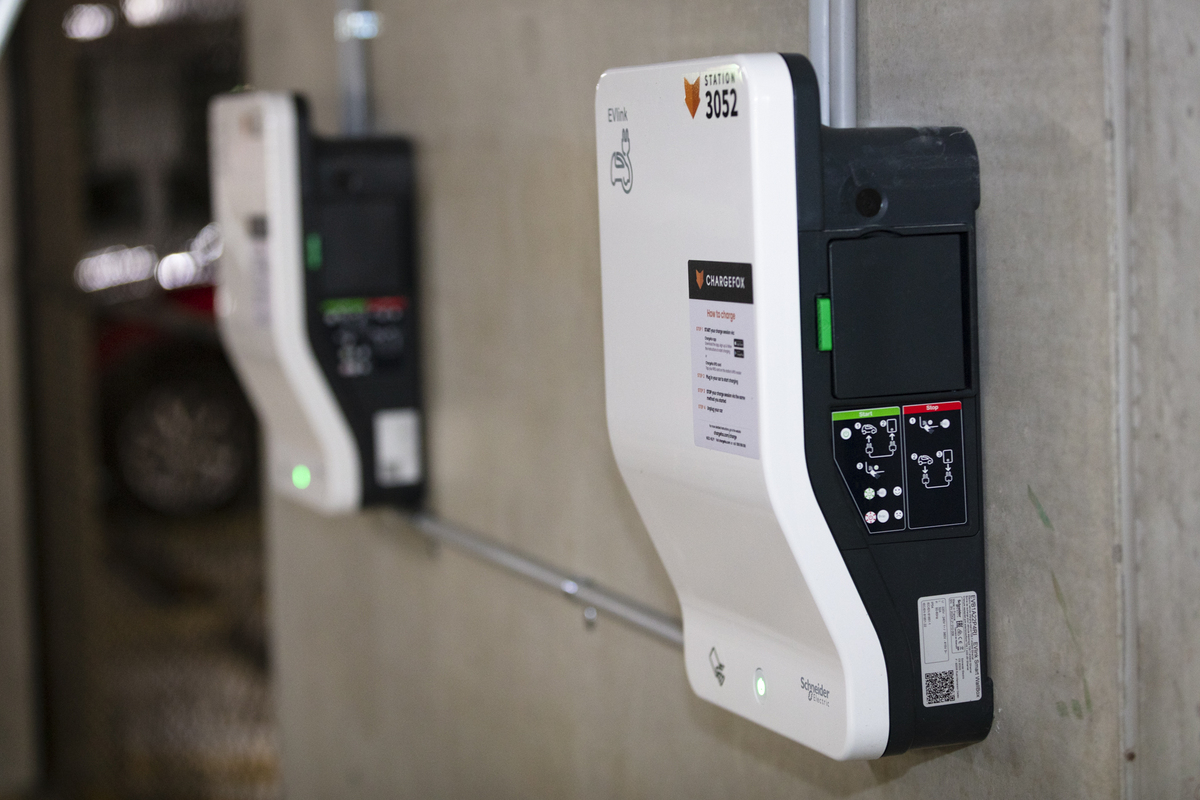
A charging point in an underground car park. Photo: Thomas Lucraft.
“The building’s substation will definitely be bigger than what we’ve seen pre-EVs, but in terms of the actual street grid, if there are things that have to be upgraded to facilitate that, I’m sure the ACT Government will do so.”
Aliqua said EV On is “100 per cent keen” to partner with more developers to deliver more private charge points in apartments across Canberra in the future.
A number of the properties at The Markets have also received a 7-Star NatHERS (Nationwide House Energy Rating Scheme) Energy Efficiency Rating. This means owners are eligible for ‘green loans’.
Offered by banks and other financial institutions, these loans typically cover environmentally friendly purchases such as hybrid cars or EVs, solar panels, double-glazing for windows and water tanks, as well as energy-efficient appliances, white goods, heaters and air-conditioners.
The Markets is set for completion by January 2025.




















